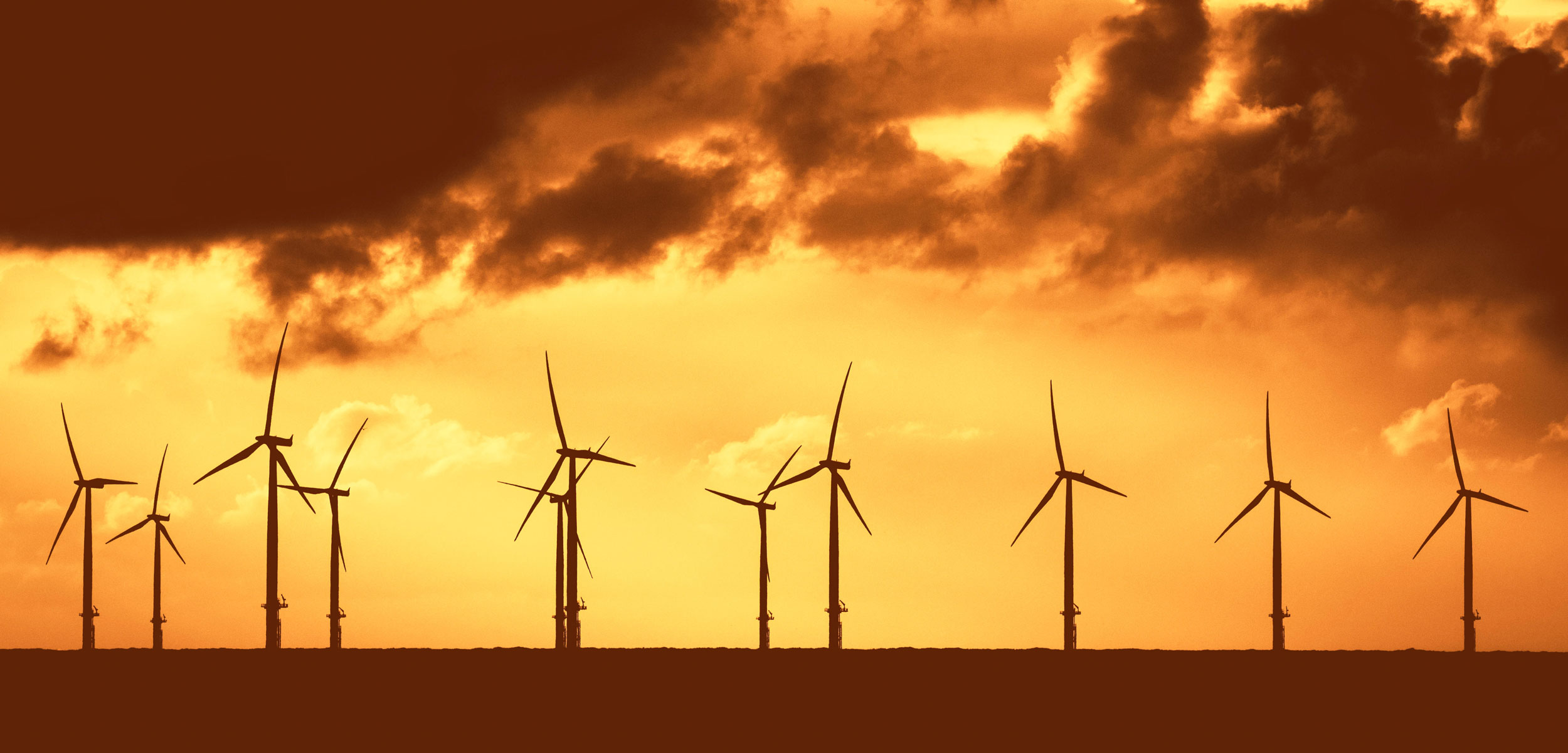Research Shows Wind Farms Could Divert Hurricane Rains
With enough wind turbines, the rainfall from Hurricane Harvey could have been reduced by 20 percent, according to a new modeling study.
Article body copy
Nature’s strength was laid bare again last week as two tropical storms marauded through Southeast Asia and the southeastern United States. Super Typhoon Mangkhut, thought to be one of the most powerful cyclones to hit the Philippines in decades, uprooted homes and turned roads into violent rivers. It killed at least 81 people before twisting its way over the South China Sea and careering into the Chinese mainland where the death toll rose further. On the US east coast, Hurricane Florence caused widespread flooding, killed at least 37 people, and left millions without power. And as with Hurricane Harvey in 2017, Florence stalled over the continent, dropping ever more rain long after making landfall.
In the face of such a raw display of nature’s fury, it may seem like little can be done to lessen the blow of a hurricane. But according to new research, help in tempering the power of hurricanes could one day come from an unexpected source: offshore wind farms.
The idea of deliberately modifying the weather with wind turbines has been around for decades, but little work has been done to calculate whether or not it could really work. In 2014, a group of researchers including Cristina Archer, a civil and environmental engineer from the University of Delaware, showed how using an army of wind turbines to extract kinetic energy from the air could potentially pacify hurricanes. The team calculated that a massive array of 78,000 turbines could reduce coastal storm surges—such as the one Hurricane Katrina shoved onto New Orleans in 2005—by up to 79 percent.
In new follow-up work, Archer and her colleagues have shown the potential for wind turbines to sap the rain from hurricanes, too.
Archer’s calculations were done using a weather forecasting model into which she plugged atmospheric data from Hurricane Harvey, which drowned the southeastern United States with 100 trillion liters of water in August 2017. She also included calculations reflecting how wind turbines affect the local atmosphere by increasing turbulence and drag. The results reveal how an array of wind turbines would affect the wind speed and direction of the oncoming hurricane, potentially reducing the downstream rainfall.
Archer’s team tested the interaction for wind farms of different sizes with varying densities of turbines. According to their calculations, a platoon of around 59,000 turbines spaced 900 meters apart would have cut the rainfall Houston experienced from Harvey by more than 20 percent.
“You’re not going to eliminate hurricane damage but reduce it,” Archer explains. “It’s one thing to have some puddles on the street and another when you have water on the first floor of people’s homes.”
The surprising result stems from the fact that hurricane winds generally slow down when the storm reaches land. The land surface is less uniform than the sea, and this increase in roughness causes the wind to slow down, converge, and be forced upward. As the moist air rises, it cools, releasing the moisture as rain. Wind turbines have a similar effect on the wind, increasing the amount of rain in and around the turbine array. “You kind of squeeze out the moisture from the hurricane,” says Archer.
Mike Biggerstaff, a meteorologist at the University of Oklahoma, says the idea seems to work on paper, but he would want to see much more detailed simulations than Archer and her colleagues used in their tests. He also believes the turbines would have to be extremely tightly spaced to have this effect on the wind.
“The results should not cause political leaders to think that hurricane impacts can so easily be mitigated,” he says. “But it should motivate more sophisticated studies.”
Ronald Smith, a meteorologist from Yale University in Connecticut, wonders whether turbines could even survive hurricane-force winds. “They have good braking systems, but probably not for Category 5 hurricanes,” he says.
Archer admits that the idea of creating a 60,000-turbine offshore wind farm is far-fetched—the world’s largest wind farm, on the edge of the Gobi Desert in China, has roughly 7,000 turbines. The largest offshore wind farm, in the Irish Sea, has just 87 turbines spread over 145 square kilometers. Instead, Archer hopes this research will inspire further studies. “It’s just the beginning of a potentially interesting new research area,” she says.
Yet given that large arrays of wind turbines may potentially slow down winds and mitigate downstream rainfall from a hurricane, might existing wind farms already be altering local weather patterns?
According to Lee Miller, an environmental engineer at Harvard University in Massachusetts, they are. “Observational studies around wind farms have now quantified differences in not only wind speed, but also surface temperature, turbulence, evaporation, and carbon dioxide concentration,” Miller says.
In a sense, these meteorological alterations could be considered a mild form of geoengineering. Right now the effects are small, but as wind farms grow in size, the impact on local weather patterns might rise commensurately.
Miller supports Archer’s efforts. “Given the expectation that the solution to reducing future climate change is the widespread deployment of low-carbon energy sources like wind and solar power, a deeper understanding of the climatic impacts seems both critical and timely.”
This year’s hurricane season is already devastating, but it is far from over. What’s more, extreme weather is expected to intensify in coming decades. “In the shadow of future climate change,” says Miller, “this proactive type of research should be actively encouraged.”

